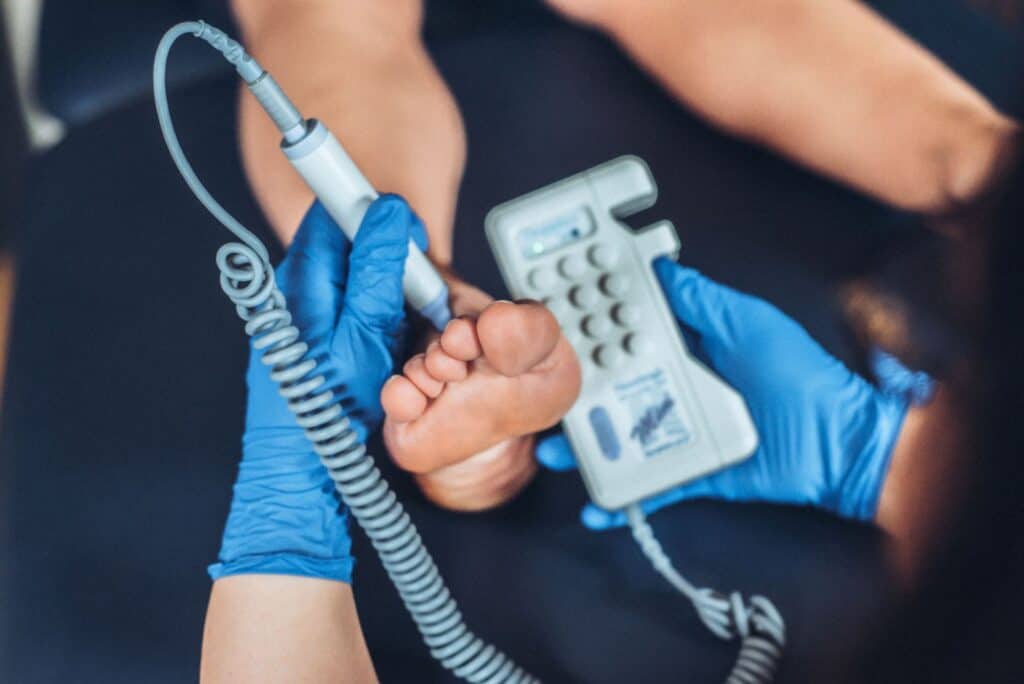Diabetes is a chronic condition that affects how the body uses glucose, leading to high blood sugar levels and health complications.
In people with diabetes, the body’s natural system that converts food into energy doesn’t work properly. For example, when you eat carbohydrates, such as starchy foods, sugary foods, milk and some dairy products, your digestive system breaks them down into glucose or blood sugar. Then, your bloodstream absorbs this glucose and uses it as energy to fuel your body’s cells.
As soon as you eat, this process raises sugar levels in your body. In response to the increased blood glucose level, your pancreas, which is a small gland underneath your stomach, releases a hormone called insulin. The role of insulin is to help the body control the levels of sugar becoming too high by turning it into energy. The bloodstream then takes the glucose and insulin to every cell in your body that needs it. In the meantime, your liver acts as a storage place for glucose, releasing more when required to maintain the energy needed by the cells.
In a healthy body, the food that enters your body, the pancreas, and the liver work as a team to ensure glucose is absorbed, stored and fed to the cells. In people with diabetes, this system is compromised because the pancreas cannot produce insulin (diabetes type 1) or is not producing enough insulin, or the one that’s generating doesn’t work correctly (diabetes type
2.) In both cases, the body struggles to regulate on its own the increased levels of glucose in the blood.
This increase in blood sugar levels can put diabetic people at a much higher risk of developing conditions such as peripheral artery disease (PAD) and vascular disease, which are caused by an obstruction in the blood flow. In PAD, the blood circulation through the arteries (blood vessels that carry blood away from the heart) decreases, while vascular disease affects how the whole circulatory system functions.
Another condition derived from high blood sugar levels is peripheral neuropathy, which causes damage to the nerves of the peripheral nervous system, affecting primarily the hands and feet. When your nerves are damaged, your limbs lose their ability to experience feeling or sensitivity to touch.
Hence, people with diabetes are at higher risk for developing problems with the feet that are not specific to diabetes but may occur more frequently due to damage to the nerves and blood vessels that supply the feet.
What are the most common foot problems with diabetes?
The most common foot problems in people with diabetes are:
● Athlete’s Foot, a fungal infection that causes itching, redness, and cracking.
● Fungal nail infections which can quickly spread to other areas of the foot. In turn, that infection can cause cracks in the skin that allow bacteria to enter, causing secondary infection and developing ulcers that can lead to amputation.
● Bunions and hammertoes, which can develop due to nerve damage, causing poor muscular control. If your nerves are no longer able to carry signals to enable your feet and legs to perform the appropriate motion when walking, your body may compensate by forcing your feet to adopt unnatural positions and altered gait patterns. This compensation leads to bone deformities such as hammertoes, bunions or Charcot foot.
● Corns, calluses and plantar warts, which can build up and, therefore, put the skin at a higher risk of breaking down and forming foot ulcers.
● Ingrown toenails which pierce the skin and become infected. Because the diabetic foot can suffer from poor blood flow and damaged nerves, compromising the immune system’s ability to heal, a minor injury can become infected, leading to more severe complications if left untreated.
● Dry skin, which can become cracked and as a result, bacteria can go in and create an infection.
● Blisters caused by ill-fitting shoes are characterised by built fluid inside the skin. If burst, this fluid can lead to infection.
● Ulcers or deep cuts in the skin, leaving the tissue underneath exposed. Diabetes can cause damage to the skin on the feet, making it more prone to developing ulcers. Foot ulcers can be slow to heal and can become infected, which can be a serious problem.
● Charcot foot, in which the bones in the foot weaken and fracture, causing the foot to become misshapen. Charcot foot can be painless, but it can also cause swelling and instability in the foot.
● Plantar fasciitis, in which the tissue that connects the heel bone to the toes becomes inflamed, causing pain in the heel or bottom of the foot.
Any of these foot problems can become extremely serious if you have diabetes, so it’s crucial that you get them treated immediately when diagnosed.
Examining your feet every day will help you spot the signs of a serious problem. If you see any of the following changes, you should seek professional advice as a matter of urgency. Symptoms to watch out for include:
● a tingling sensation or numbness
● a loss of feeling in your feet or legs
● hair loss on your legs and feet
● burning pain
● a dull ache
● smooth, shiny skin on your feet
● swollen feet
● feet that don’t sweat
● wounds or sores that don’t heal
● cramp in your calves when resting or walking
Because with diabetes, many of the body functions are compromised, common foot problems can worsen quickly and lead to serious complications. Hence, it is essential that you seek professional help straight away should you find any abnormalities in your feet.
If you have diabetes and are experiencing foot pain or other foot problems, it is important to your podiatrist for evaluation and treatment.
For more information or to book an appointment to get your feet examined, contact us.
What are the most common foot problems with diabetes?
The most common foot problems in people with diabetes are:
● Athlete’s Foot, a fungal infection that causes itching, redness, and cracking.
● Fungal nail infections which can quickly spread to other areas of the foot. In turn, that infection can cause cracks in the skin that allow bacteria to enter, causing secondary infection and developing ulcers that can lead to amputation.
● Bunions and hammertoes, which can develop due to nerve damage, causing poor muscular control. If your nerves are no longer able to carry signals to enable your feet and legs to perform the appropriate motion when walking, your body may compensate by forcing your feet to adopt unnatural positions and altered gait patterns. This compensation leads to bone deformities such as hammertoes, bunions or Charcot foot.
● Corns, calluses and plantar warts, which can build up and, therefore, put the skin at a higher risk of breaking down and forming foot ulcers.
● Ingrown toenails which pierce the skin and become infected. Because the diabetic foot can suffer from poor blood flow and damaged nerves, compromising the immune system’s ability to heal, a minor injury can become infected, leading to more severe complications if left untreated.
● Dry skin, which can become cracked and as a result, bacteria can go in and create an infection.
● Blisters caused by ill-fitting shoes are characterised by built fluid inside the skin. If burst, this fluid can lead to infection.
● Ulcers or deep cuts in the skin, leaving the tissue underneath exposed. Diabetes can cause damage to the skin on the feet, making it more prone to developing ulcers. Foot ulcers can be slow to heal and can become infected, which can be a serious problem.
● Charcot foot, in which the bones in the foot weaken and fracture, causing the foot to become misshapen. Charcot foot can be painless, but it can also cause swelling and instability in the foot.
● Plantar fasciitis, in which the tissue that connects the heel bone to the toes becomes inflamed, causing pain in the heel or bottom of the foot.
Any of these foot problems can become extremely serious if you have diabetes, so it’s crucial that you get them treated immediately when diagnosed.
Examining your feet every day will help you spot the signs of a serious problem. If you see any of the following changes, you should seek professional advice as a matter of urgency. Symptoms to watch out for include:
● a tingling sensation or numbness
● a loss of feeling in your feet or legs
● hair loss on your legs and feet
● burning pain
● a dull ache
● smooth, shiny skin on your feet
● swollen feet
● feet that don’t sweat
● wounds or sores that don’t heal
● cramp in your calves when resting or walking
Because with diabetes, many of the body functions are compromised, common foot problems can worsen quickly and lead to serious complications. Hence, it is essential that you seek professional help straight away should you find any abnormalities in your feet.
If you have diabetes and are experiencing foot pain or other foot problems, it is important to your podiatrist for evaluation and treatment.
For more information or to book an appointment to get your feet examined, contact us.








